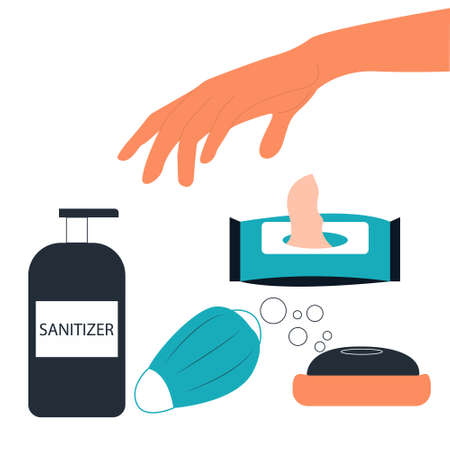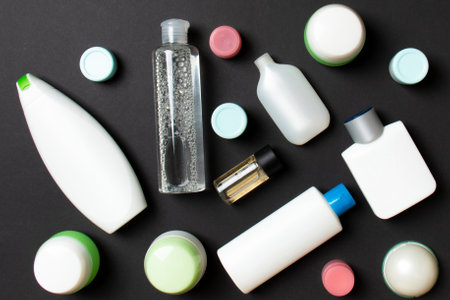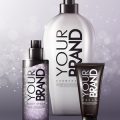Understanding Beauty Packaging Materials
When it comes to recycling and disposing of grooming and skincare packaging responsibly in the UK, understanding the materials used is your first step. Most beauty products come in a variety of containers, from glass bottles for colognes and aftershaves, to plastic tubs for moisturisers and aluminium tubes for shaving creams. Each material has its own recycling requirements and challenges within UK councils’ systems. For example, clear PET or HDPE plastics are widely accepted at kerbside collections, while mixed plastics or composite packaging (like pumps and caps) can be trickier to recycle. Glass is generally recyclable but must be cleaned thoroughly, and sometimes coloured glass isn’t accepted everywhere. Aluminium is highly valued for recycling, yet small items like travel-sized tubes may fall through sorting machinery. By knowing what you’re handling—be it plastic, glass, aluminium, or even cardboard—you’ll be better equipped to sort your empties correctly and reduce contamination in recycling streams across the UK.
2. Recognising UK Recycling Symbols and Local Schemes
When it comes to responsibly recycling your beauty product packaging in the UK, understanding the various symbols and council-specific recycling rules is essential. British recycling icons can sometimes feel like a code, but once you know what to look for, you’ll have no trouble sorting glass bottles from plastic pumps or identifying which bits of packaging belong in your kerbside collection. Here’s how to make sense of it all and play your part in keeping your grooming routine eco-friendly.
Decoding Common British Recycling Symbols
| Symbol | Meaning | Action |
|---|---|---|
| Mobius Loop (three arrows) | Item is recyclable, but not necessarily collected everywhere | Check with your local council if this item is accepted in household bins |
| Green Dot | The producer has made a financial contribution to recycling schemes | This does not guarantee the item is recyclable in the UK; check locally |
| PET 1 / HDPE 2 (on plastics) | Commonly used for bottles and containers | Rinse and recycle in most kerbside collections |
| Crossed-out wheelie bin | Not suitable for household waste (often on electricals or batteries) | Take to a designated recycling point or shop scheme |
Navigating Council-Specific Rules for Glass, Plastics, and Pumps
Local councils across England, Scotland, Wales, and Northern Ireland often have different guidelines for what goes in each bin—especially when it comes to beauty packaging. For example, glass perfume bottles are usually widely recycled, but pump dispensers often contain metal springs that aren’t easily processed. Similarly, black plastics (like some aftershave bottles) are tricky for sorting machines and might not be accepted everywhere.
Top Tips for Men’s Grooming Product Packaging:
- Glass Bottles: Rinse out cologne or serum bottles before placing them in the glass bin. Remove any lids or pumps as these may need separate disposal.
- Pumps and Sprays: Disassemble if possible. Plastic parts might go in recycling, but metal springs and mixed materials generally do not.
- Tubes (e.g., shaving gel): Squeeze out all remaining product and check your council’s website—some accept flexible tubes; others do not.
- Sample Sachets: These are rarely recyclable due to their multi-layer construction; dispose of them in general waste unless specified otherwise by the brand.
How to Check Your Local Rules
The best way to confirm if an item is recyclable at home is to visit your local council’s website or use the Recycle Now locator tool. Enter your postcode to get tailored guidance on what can be collected from your doorstep and where you might need to drop items off at a recycling centre or participating retailer. By taking these simple steps, you’ll ensure your bathroom shelf stays both stylish and sustainable.

3. Preparing Beauty Packaging for Recycling
Before you chuck your empties in the recycling bin, its crucial to prep them properly to ensure they’re actually recycled. Many councils across the UK require that beauty packaging is clean and sorted correctly, so a bit of effort goes a long way. Here’s how to get started:
Step 1: Rinse Thoroughly
Start by rinsing out any leftover product from bottles, jars, or tubes. Whether it’s shampoo, moisturiser, or face wash, make sure there’s no residue left inside. A quick swish with warm water does the trick – this prevents contamination at recycling facilities and keeps your bin fresh.
Step 2: Separate Components
Many beauty containers are made up of different materials. Remove pumps, lids, droppers, or spray tops from bottles and jars – these parts are often not recyclable with the main container. For example, take off the pump from your moisturiser bottle and pop it in general waste unless your council accepts mixed materials.
Step 3: Sort Accordingly
Check the recycling symbols on each item. Most plastic bottles and glass jars can go in your kerbside recycling, but items like aerosols need special handling. Ensure aerosols (like deodorant or hairspray) are completely empty before recycling them, and never pierce or squash them. Refer to your local council’s guidelines if you’re unsure about specific items.
Pro Tip for UK Residents
If you’re keen to go the extra mile, some brands offer take-back schemes for hard-to-recycle packaging like flexible pouches or mascara tubes. Keep an eye out for collection points in high street shops or post-back programmes — it’s a smart way to keep more waste out of landfill.
4. Where to Recycle: Nationwide and High Street Options
When it comes to recycling beauty packaging in the UK, many items can’t simply be tossed into your household recycling bin. Fortunately, there are several nationwide and high street initiatives designed to help you dispose of empties responsibly. Let’s break down some key locations and noteworthy schemes that make sustainable grooming straightforward for gents across the country.
National Collection Points
Major supermarkets and pharmacies often provide collection bins for hard-to-recycle beauty packaging. Boots, for example, operates a “Recycle at Boots” scheme in select stores where you can drop off used skincare, haircare, and cosmetic packaging—even those tricky pumps and compacts that kerbside collections won’t accept.
| Retailer | Scheme Name | Accepted Items | Locations |
|---|---|---|---|
| Boots | Recycle at Boots | Cosmetic & skincare packaging (plastic, glass) | Over 700 stores nationwide |
| Sainsbury’s | Flexible Plastics Recycling | Pouches, tubes, wrappers | Select larger stores UK-wide |
| Lush | Bring It Back Scheme | Lush pots & bottles | All Lush shops across the UK |
| The Body Shop | Return, Recycle, Repeat | Empty bottles & tubs (all brands) | Participating stores nationwide |
Specialist High Street Schemes
If your grooming arsenal includes products from niche or luxury brands, high street retailers like John Lewis or department stores may have their own take-back initiatives. Additionally, Terracycle partners with various brands to set up drop-off points for items such as razors, deodorant sticks, and even toothbrushes.
Key High Street Drop-Off Points:
- B&M Stores: Accepts dental care products as part of oral care recycling programmes.
- Kiehl’s: Offers rewards for returning empty product containers in-store.
- Debenhams Beauty Halls: Hosts branded recycling stations for fragrances and cosmetics.
A Few Tips for High Street Recycling Success:
- Always clean out containers before dropping them off—residue can contaminate the recycling process.
- Check accepted item lists online or in store as policies may vary by location.
- If unsure whether a specific material is accepted, consult with staff—they’re usually happy to help you recycle right.
The next time you finish a moisturiser or beard oil, don’t just toss it—use these nationwide options to keep your routine sharp and sustainable. Responsible disposal is just as much a part of modern British grooming as a well-kept beard or classic fade.
5. Disposing of Non-Recyclable Items Responsibly
While the UK has made great strides in recycling, many beauty packaging items—such as mirrors, pumps, and products made from mixed materials—remain challenging to recycle through standard kerbside collections. Here’s how you can handle these trickier pieces in a way that’s both responsible and considerate of the environment.
Understanding What Can’t Go in Your Recycling Bin
First things first: it’s important to recognise that not everything with a recycling symbol is accepted by your local council. Items like make-up mirrors, pump dispensers (due to their metal springs), and packaging combining plastics with metals or glass often end up in landfill if tossed in regular recycling bins. These materials can contaminate recycling streams, making the process less efficient overall.
Specialist Collection Points and Programmes
Before disposing of non-recyclable items, check if your local authority or high street retailers offer specialist take-back schemes. Many UK beauty brands now partner with organisations like TerraCycle, which have drop-off points for hard-to-recycle beauty packaging—including pumps and mixed-materials compacts. Boots and John Lewis, for example, run recycling initiatives where you can return empties that would otherwise be destined for landfill.
Disassembling Where Possible
If you’re dealing with a product that’s part recyclable (for example, a bottle with a pump), try to separate the components before disposal. Remove pumps or droppers from bottles and put the plastic or glass bottle into your recycling bin if it’s accepted locally. The non-recyclable parts should then go in your general waste, unless there’s a specialist scheme available.
Creative Reuse and Upcycling
Consider giving non-recyclable items a second life. Mirrors can be repurposed as travel accessories or compact mirrors for on-the-go touch-ups. Old jars and pots are ideal for storing grooming tools or decanting other products. Upcycling not only reduces waste but also brings a touch of bespoke style to your grooming routine.
Final Advice: Check Local Guidelines
Council rules vary widely across England, Scotland, Wales, and Northern Ireland. Always consult your local council’s website for the latest guidance on what is accepted for recycling or specialist disposal in your area. By taking these extra steps, you’ll ensure your grooming regime stays sharp—and so does your commitment to sustainability.
6. Tips for Reducing Waste and Choosing Sustainable Brands
Making eco-friendly grooming choices goes beyond recycling—its about adopting everyday habits that minimise waste and supporting brands committed to sustainability. Start by choosing multi-use products or those with minimal packaging to cut down on unnecessary plastic. Many British grooming brands, like Bulldog Skincare and Neal’s Yard Remedies, have embraced recyclable materials and innovative alternatives such as glass or aluminium containers.
Refill Schemes: A Game Changer
Several high street retailers and boutique brands now offer refill schemes for everything from shaving gel to moisturisers. Boots and Lush, for example, allow you to bring back empty containers for refills or rewards, reducing single-use packaging significantly. Keep an eye out for in-store refill stations or online return programmes—these are becoming increasingly popular across the UK.
Everyday Habits That Make a Difference
Simple daily actions can reduce your impact: always rinse out containers before recycling, avoid sachets or individually wrapped samples, and opt for bar soaps over liquid products in plastic bottles. Switching disposable razors for safety razors or electric trimmers also slashes long-term waste.
Supporting British Eco-Friendly Brands
The UK is home to pioneering sustainable grooming brands. Look for labels such as FSC-certified paper, cruelty-free logos, or the “Plastic Free” badge when shopping. Brands like REN Clean Skincare and UpCircle repurpose food waste into beauty ingredients and use fully recyclable packaging, setting a new standard for responsible grooming.
By building these habits into your routine and choosing brands that prioritise the planet, youll not only look sharp but also contribute positively to a greener future across the UK.


